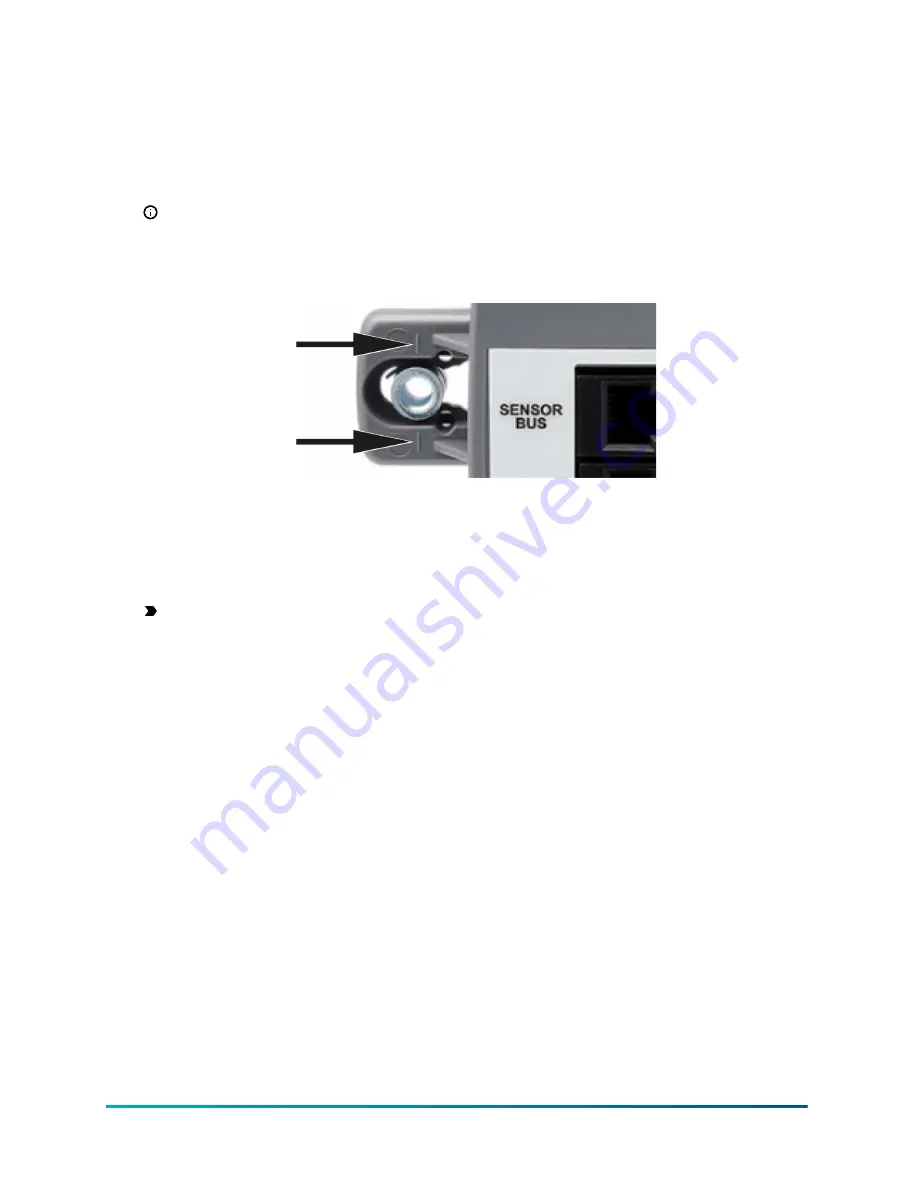
4. Ensure that the end of line (EOL) switch is set to the off position.
5. Use the zone bus address range 4-127 for Verasys zone bus controllers.
6. Place the ZEC510 on the actuator shaft so that the wiring connections are easily accessible.
7. Ensure that the ZEC510 base is parallel to the VAV box, perpendicular to the damper shaft. If
necessary, use a spacer to offset tipping of the ZEC510 caused by the shaft bushings.
Note:
Use the alignment marks to center the captive spacer to ensure sufficient
movement in either direction.
Figure 1: Captive spacer alignment marks
8. Secure the self-drilling no.10 screw through the captive spacer with a power screwdriver
and 100 mm (4 in.) extension socket. Alternatively, use a punch to mark the position of the
shoulder washer.
9. Drill a hole into the VAV box using a 5/16 in. drill bit.
10. Insert the mounting screw and tighten it against the spacer.
Important:
Do not over-tighten the screw. Over-tightening can cause the threads to strip.
If you mount the ZEC to the VAV box, make sure that the screws do not interfere with
damper blade movement.
11. Locate the damper position using the marking on the end of the damper shaft.
12. Note the direction, clockwise (CW) or counterclockwise (CCW), required to close the damper.
The actuator configuration depends on the amount of rotation necessary for the damper to go
from the full-open to the full-closed position. Decide between the following options:
- For 90° rotation, install the damper in the full-closed position.
- For 45° or 60° rotation, install the damper in the full-open position.
13. Push down and hold the manual override button and turn the actuator coupler until it contacts
the mechanical end-stop at either the full-closed or full-open position.
7
Verasys ZEC510 VAV Controllers Installation Guide






















